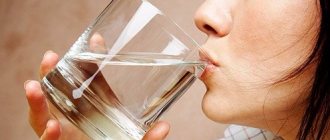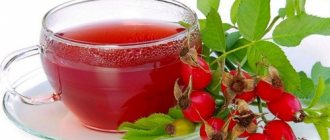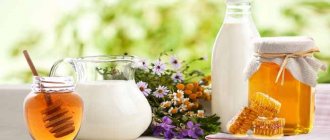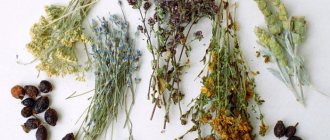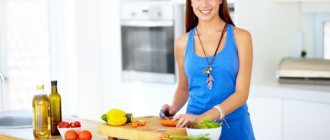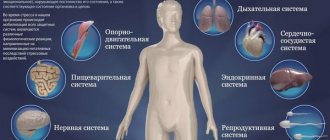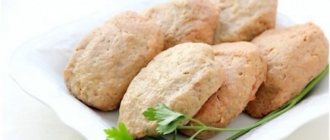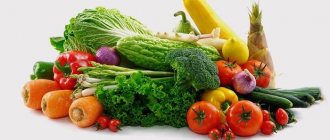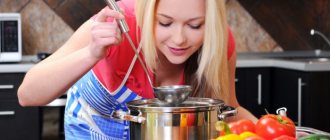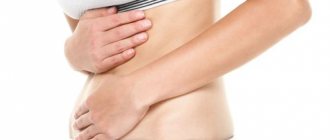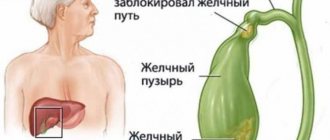In the future - stones?
– When diagnosing cholecystitis (inflammation of the gallbladder), various research methods are used. Which ones are more informative?
– Is the wall of the bladder thickened due to inflammation, are there kinks, constrictions, deformation, impaired motor activity, the presence of stones - all this can be revealed by ultrasound. If necessary, duodenal intubation is used to assess the motor function of the gallbladder and its sphincter and to conduct a biochemical study of the collected bile. In difficult cases, computed tomography is used.
– If there is cholecystitis, will gallstone disease inevitably develop over time?
– The formation of stones is primarily caused by disturbances in the motor activity of the gallbladder, leading to stagnation of bile, as well as infection, disruption of the secretion of cholesterol, bile acids, and phospholipids by the liver. But 85-90% of stones that form in the gallbladder are cholesterol.
To prevent bile stagnation, you need to move more, eat 5-6 times a day at the same time. This is important: every meal stimulates the secretion of bile.
Diet No. 5 is recommended, including dairy and plant products, vegetarian soups - vegetable, cereal, lean meat and poultry dishes, vegetable oil. You should limit foods rich in cholesterol. You will have to give up rich broths (meat, chicken, fish, mushroom), fatty meats, poultry and fish, and lard. Fried, smoked, rich, spicy, seasonings and spices will have to be excluded, alcohol too.
Choice for cholecystitis
In case of diseases of the gallbladder, the secretion of bile is disrupted and in order to normalize its production, alkaline water should be included in the diet, which is recommended to be consumed in order to prevent exacerbation of the disease. But what kind of water should you choose? Alkaline waters have a significant difference in chemical composition, which determines the healing qualities and taste of the mineral water. When choosing water, it is extremely important to find one suitable for your body, otherwise you can provoke an exacerbation of the disease, in which any mineral water is contraindicated.
"Borjomi"
Rich in vitamins and minerals, Borjomi healing water has the ability to relieve spasms and reduce inflammation, while alleviating the patient’s condition. In addition, the water described is capable of removing toxins from the body and stimulating the outflow of internal juices. Borjomi should be drunk only warm, since cold water increases pain, and hot water irritates the affected organ. Contraindications are low stomach acidity and gallstones.
"Essentuki"
Before use, you should consult your doctor.
Another popular type is sodium chloride mineral water called “Essentuki”. It contains organic substances, trace elements and gases that can increase the level of hemoglobin in the blood. If a patient is diagnosed with cholecystitis, then, despite the high usefulness of this mineral water, the relevance of its use in this disease should be determined exclusively by a specialist. It is worth considering that when cooled, this water will act like regular water in pipes.
Other types
In addition to the healing waters described above, there are many more types, the following are considered popular:
- "Mirgorodskaya". It belongs to the group of sodium chloride waters and is used as a table water for daily use. Drinking this mineral water is recommended for liver problems, colitis, metabolic disorders and bile duct diseases.
- "Glade font." It is hydrocarbonate water containing fluoride. It has great benefits for the affected gallbladder, helps lower cholesterol levels in the blood and takes an active part in the fight against excess weight.
- "Luzhanskaya". This water is hydrocarbonate and contains fluorine and silicic acid. Used to treat diseases of the digestive system and liver, but is not recommended for low acidity and decreased levels of thyroid hormone.
- "Shayanskaya". The unique water, which is naturally carbonated, is hydrocarbonate and is widely used for liver and stomach diseases, and for hangover syndrome.
- "Zbruchanskaya". Rich in active components such as magnesium, chlorine, iron and calcium, therefore it is widely used to heal ailments of the bile duct and kidneys.
- "Bukovinskaya". Alkaline water with a high iodine content is recommended for use for diseases of the biliary tract, inflammation of the colon and liver diseases, but is contraindicated for inflammation of the joints, gout and severe headaches.
Broths – to eat or not to eat?
– Do you need to limit yourself constantly, or at least sometimes you can allow yourself something tasty?
– You will have to stick to the diet constantly, nothing can be done about it, but during the period of remission (improvement) it can be expanded a little. Fatty, smoked, and spicy foods remain prohibited, but you can afford boiled and then slightly fried meat and baked goods made from poor dough.
– The doctor does not advise some people with chronic cholecystitis to eat sour cream, butter, eggs, while others, on the contrary, advise them. Why is this happening?
– Dietary recommendations may vary depending on whether the tone and motility of the gallbladder are decreased or increased. In the first case, i.e., with hypomotor dyskinesia of the gallbladder, products are recommended that promote its contraction - soft-boiled eggs, sour cream, cream, weak meat or fish broths, oil, especially vegetable oil. In the second case, with hypermotor dyskinesia, on the contrary, all of the listed products must be limited.
Text of the book “100 recipes for cholecystitis. Tasty, healthy, soulful, healing"
Oatmeal jelly
Ingredients: milk - 3/4 cup, water - 1/4 cup, oatmeal - 15 g, sugar - 1 tbsp.
spoon. Grind the oatmeal in 1/4 cup of milk, then add another 1/2 cup of milk and cook for 10 minutes.
Add half a tablespoon of sugar and cook over low heat until tender. At the end of cooking, it is advisable to add 1/2 teaspoon of burnt sugar. Oatmeal soup with strawberries
Ingredients:
oatmeal - 1/2 cup, milk - 2 cups, sugar - 1 tbsp.
spoon, strawberries - 1 glass. Boil oatmeal in two glasses of milk.
Add one glass of strawberries and one tablespoon of sugar, stir, leave for 5-10 minutes. Serve hot. Oatmeal cookies
Ingredients:
wheat flour – 100 g, oatmeal – 50 g, sugar – 1 tbsp.
spoon, milk - 1/4 cup, butter - 1 teaspoon, egg - 1 pc., salt. In a bowl, mix flour, oatmeal, sugar and a pinch of salt. Add baking soda on the tip of a knife. Add a beaten egg, 2 tablespoons of milk to the melted butter, stir and combine with flour. The resulting mass should be quite thick. Roll out the dough on a board sprinkled with flour, cut out circles with a glass, place on a greased sheet and bake in moderate heat for 20 minutes.
Rose hip
Rosehip has an antimicrobial and mild choleretic effect, therefore it is actively used for cholecystitis. A decoction of the berries of this plant is drunk as tea to eliminate signs of the disease. You can also use cinnamon rosehip flowers as the base of the drink. A decoction of the dried roots of this plant is successfully used for gallstones.
Medicines from rose hips should not be used during the period of exacerbation of the disease. It is forbidden to drink them for people suffering from gastritis and peptic ulcers, heart failure, thrombophlebitis, endocarditis.
Rose hips should not be used for a long time, as this can lead to depression of the pancreatic insular apparatus.
After each use of rosehip-based products, it is necessary to rinse your mouth, since the acids contained in it negatively affect tooth enamel. Rose hip decoction
Ingredients:
rose hips – 100 g, water – 1 l.
First way.
Sorted red-orange dried rose hips are washed, placed in an enamel pan, and poured with boiling water at the rate of 100 g of dried rose hips per 1 liter of water. Then put the pan on the fire and boil for 10 minutes. Cover with a lid, cool and leave for 24 hours. The resulting infusion is filtered through 2 layers of gauze or a nylon filter, sugar is added to taste, stirred, poured into bottles and stored in a dark, cool room. Use for 3 days, as the amount of vitamin C decreases over time.
Second way.
Dried rose hips are washed, after the water has drained, lightly crushed with a wooden masher in an enamel bowl, placed in an enamel pan, and poured with boiling water at the rate of 100 g of dried rose hips per 1 liter of water. Then put the pan on the fire, boil for 8 minutes, cover with a lid, cool and leave for 12 hours. The resulting infusion is filtered through 2 layers of gauze or a nylon filter, sugar is added to taste, stirred, poured into bottles and stored in a dark, cool room. Use within 3 days.
The daily norm for children is a quarter glass, for adults – half a glass.
Rose hip drink
Ingredients:
rose hips (dry fruits) – 3 tbsp.
spoons, blueberries (dried) - 1 tbsp. spoon, water – 5 glasses, sea buckthorn (juice with sugar) – 4 tbsp. spoons, honey - 3 tbsp. spoons. Pour boiling water over chopped dry rose hips and a tablespoon of dried blueberries.
Leave for 20–30 minutes, strain, add natural sea buckthorn juice without pulp, sugar and honey. Stir well and cool. The drink is especially useful for people suffering from metabolic disorders and diabetes. Rose hip infusion
Ingredients:
rose hips;
water; sugar (optional); dried fruits (optional). Rinse the berries under running water. Then pour them into a thermos at the rate of 1 tbsp. spoon of fruit in 1 glass of water. It is better to chop the fruits, so it will be easier for them to release their beneficial properties.
You can also throw a small handful of raisins or dried apricots into the thermos.
After all the ingredients are inside, pour them not with boiling water, but with 80 °C water. There should be some air left in the thermos so that the broth can “breathe”. Rose hips should brew for 7–8 hours. Drink half a glass 3 times a day. If you brew rose hips without sugar, then it is very useful to drink it with honey. Rose hip drink
Ingredients:
fresh rose hips – 1 kg, water – 1 l, sugar – 200 g, citric acid – 1–2 g.
Pour boiling water over the crushed fruits (one part berries, one part water) and leave for 1–2 days, then compress.
It is also possible to heat crushed rose hips for about 30 minutes in water at 80 °C and then press them while hot. Add 0.2 kg of sugar and 1–2 g of citric acid (per 1 liter of juice) to the strained or settled juice. This fruit drink is rich in vitamin C (50–80 mcg%) and is a valuable product, especially in the spring. To prepare fruit drink, it is recommended to use fruits from garden rose hips, containing up to 1000 mcg% of vitamin C. Fruit drink from rose hips and apples
Ingredients: rose hips - 4 tbsp. spoons, sour apples - 5 pcs., water - 1 l, sugar or honey - 3-4 tbsp. spoons, lemon or orange zest, citric acid.
Pour cleaned rose hips and apples, cut into small pieces, with cold water, boil for several minutes, strain.
Add sugar or honey to the broth, a little lemon or orange zest, lemon juice or citric acid to taste. Rose hip jelly
Ingredients:
dried rose hips – 40 g, granulated sugar – 120 g, starch – 45 g, citric acid.
Sort out the dried rosehips, rinse in cold water, place in a saucepan, add hot water, close the lid, leave for 1.5 hours to swell, then cook in the same water until softened for 10–15 minutes.
Strain the finished broth, add granulated sugar, citric acid, bring to a boil, add diluted starch, stir quickly and bring to a boil again. Pour jelly into serving bowls and cool. Rosehip petal mousse
Ingredients:
ready-made syrup from rosehip petals – 1 glass, semolina – 1 glass, water – 1.5 glasses, wine – 10 ml, chopped nuts – 2 tbsp.
spoons. Dilute semolina in water and pour the resulting liquid gruel into boiling rosehip petal syrup.
Boil with constant stirring for 5-6 minutes. Cool the resulting mass, put on ice and beat with a whisk until a thick foam forms. Serve in vases; the mousse can be poured with syrup and wine or sprinkled with grated nuts. Rose hip syrup
Ingredients:
rose hips – 1 kg, sugar – 1 kg, water – 6 glasses.
Rinse fresh rose hips, separated from seeds, thoroughly in cold water, then remove hairs and chop.
Boil in water for 10 minutes, add sugar and continue cooking for another 15–20 minutes, strain through a sieve and pour into sterilized bottles. The syrup can be used to prepare various dishes and drinks, and fruit juice can be used for fillings and seasonings. It is much easier and simpler to prepare syrups from rose hip petals. Rose hip petal syrup
Ingredients:
rose hip petals – 30 g, sugar – 700 g, water – 1 l.
Dissolve sugar in water, heat to a boil and pour the resulting sugar syrup over the rosehip petals. Bring the mixture to a boil and leave to cool in a sealed container for 10–12 hours. Store in glass bottles or jars without separating the petals from the syrup.
Beet
The valuable qualities of this vegetable allow it to be used by people with inflammation of the gallbladder without restrictions. When boiled, beets are used as a good food product that helps diversify and enrich the daily diet of a patient on a diet with vitamins. The juice from this vegetable and its various decoctions have pronounced medicinal properties. They lower cholesterol levels and reduce the painful appearance of cholecystitis. Their use before meals has a good effect on the patient's condition.
Beetroot has contraindications; it is prohibited to use it if you are diagnosed with diabetes mellitus, gastritis with high acidity, diarrhea, kidney stones and alkaline urine.
Carrot and beet salad
Ingredients:
beets – 1 pc., carrots – 2 pcs., chopped green onions – 1 tbsp.
spoon, sour cream - 3 tbsp. spoons. Cut the peeled carrots and beets into strips, place in a salad bowl, season with sour cream and sprinkle with chopped green onions on top.
Baked beet salad
Ingredients:
beets – 3 pcs., vegetable oil – 2 tbsp.
spoons, vinegar - 0.25 cups, dill or parsley, salt, pepper. Bake beets in the oven, peel, cut into strips, salt, pepper, add oil, vinegar, stir and add dill or parsley.
Serve the salad with fried and boiled meat. Beetroot salad with cranberries
Ingredients:
beets – 3 pcs., cranberries – 0.5–1 cup, sugar, sour cream – 0.5 cups or vegetable oil – 1 cup.
Peel the washed beets and finely grate them.
Wash and mash the cranberries, mix with beets and season with sugar, add sour cream or vegetable oil. You can also use boiled beets. Beetroot salad with prunes
Ingredients:
beets – 4 pcs., prunes – 4 pcs., lemon – 4 slices, kefir – 0.5 cups, chopped celery – 2 tbsp.
spoons, salt. Grate the peeled beets on a coarse grater.
Rinse the prunes, add an equal amount of water and bring to a boil. Then leave to swell for 20–25 minutes. Remove pits from prunes. Add prunes, lemon slices, salt to the beets, season with kefir. Sprinkle chopped celery on top of the salad. Salad with celery
Ingredients:
celery – 200 g, beets – 200 g, carrots – 200 g, olive oil – 40 g, 3% wine vinegar – 20 g, salt.
Wash and finely chop the celery greens, cut the baked beets and raw carrots into strips. Separately, season each chopped vegetable with olive oil, vinegar, and salt.
When serving, place separately dressed vegetables in bouquets in a salad bowl.
Soup from apples and prunes with beets
Ingredients: apples – 2 pcs., beets (small) – 1 pc., prunes – 20 pcs., sugar – 1 tbsp. spoon, water - 4 glasses.
Pour the washed prunes into two glasses of water, boil for 3 minutes, drain the broth, remove the pits from the prunes.
Peel apples and remove seeds, cover with water and boil until soft. Add prune broth, prunes, sliced apples, sugar, grated beets to the hot, strained apple broth and bring the mixture to a boil. Borscht with melted cheese
Ingredients:
beets – 4 medium, cabbage – 1 small fork, carrot – 1 pc., onion – 1 pc., butter – 2 tbsp.
spoons, salt, processed cheese - 1 pc., tomato paste - 1 tbsp. spoon. Cut beets, carrots, cabbage and onions into strips, put butter and all vegetables into a slow cooker, add tomato paste and cook on the “Stew” mode for 20 minutes.
Then fill everything with water (the amount depends on the desired thickness of the soup), add processed cheese cut into pieces, salt and cook on the same program for another 10 minutes. Kissel from beet broth with sour cream
Ingredients:
beet broth - 1 l, starch - 50 g, citric acid - 2 g, sour cream - 200 g.
Cut off the root shoots and tops of the beets. Wash the root vegetables, add hot water, add a little citric acid and boil. Strain the broth and bring to a boil. Dilute the potato starch with part of the cooled broth and, stirring, pour it into the hot broth. Bring to a boil and remove from heat. Pour the jelly into glasses and cool. Then, without stirring it, add sour cream or serve it separately.
Lemon
Lemon is a fairly sour fruit, so for cholecystitis it is used in small quantities for exclusively medicinal purposes. But this does not make it any less effective. Most often, lemon is included in medicinal products designed to cleanse the gallbladder and bile ducts (this procedure is called tubage), as well as increase the production of bile.
To cleanse, make an enema from a mixture of lemon juice and water, lie on your right side and place a heating pad in the liver area.
After 20 minutes, the intestines are emptied. The procedure is carried out once a week. To improve the movement of bile, lemon is ground in a meat grinder, mixed with garlic and honey and taken before breakfast. Carrot decoction with lemon
Ingredients:
carrots – 200 g, lemon – 20
g,
water – 800 ml.
Peel the carrots and grate them on a fine grater, squeeze out the juice.
Remove the zest from the lemon and squeeze out the juice. The zest is finely chopped, combined with carrot pulp, poured with hot water and boiled for 5-10 minutes. Let the broth brew and filter. Squeezed carrot and lemon juice are poured into it and cooled. Lemon juice
Ingredients:
water – 500 ml, lemon – 1 piece, sugar – 100 g.
Wash the lemon. Pour boiling water over it, let it cool and grate the zest, being careful not to remove the white layer. Squeeze the juice from the lemon and put it in the refrigerator. Pour lemon zest with cold water, put on fire and boil. Remove from heat, strain, add sugar and mix well. Cool, pour in lemon juice, pour into a jug and refrigerate.
Orange juice is made in the same way, but the juice of half a lemon is added to one orange if the orange is sweet.
If the orange is sour, then you don’t need to add lemon. Lemon jelly
Ingredients:
water - 800 l, sugar - 1 cup, zest of 1 lemon, juice of 1.5 lemons, starch - 0.4 cups.
Boil water with sugar, add zest and lemon juice, boil again, strain.
Put it back on the fire and, stirring continuously, pour in a mixture of starch and 200 ml of lukewarm water in a thin stream. Once it bubbles and thickens, remove from heat, cool, and serve with cream or milk. Berry jelly
Ingredients:
berry juice - 2 cups, sugar - 2 cups, white table wine - 2 cups, lemon - 1 pc. gelatin - 30 g.
Squeeze juice from berries, add sugar, white table wine, lemon juice, bring to a boil to a boil, add gelatin dissolved in warm wine, mix well, pour into molds and place in a cool place.
Cornflower jelly
Ingredients : cornflowers – 100 g, sugar – 300
g,
lemons – 2 g, gelatin – 30 g, wine – 1 glass.
Brew cornflowers with boiling water, let it brew, strain, add sugar, boil, pour in the juice of two lemons and a glass of wine, strain, cool.
Dishes for cholecystitis
Snacks
Salad with chicken, prunes and cucumbers
Ingredients:
chicken – 900 g, pitted prunes – 15–20 turn., cucumber – 4–5 pcs., walnuts – 3/4 cup (chopped), sour cream – 220–240 g, salt, pepper - to taste.
Boil the chicken.
Cool the breast and cut into cubes. Boil and cut the eggs. Soak prunes in water for 5 minutes, chop, add to a bowl. Lightly chop the nuts and add to the bowl. Peel the cucumbers and cut into cubes. Season with sour cream, mayonnaise or yogurt. Add salt and pepper. Mix everything. Fig snack
Ingredients:
figs – 4 pcs., bacon – 4 slices, cheese – 100 g, salt, pepper – to taste, cumin – to taste, sugar – to taste.
Wash the figs and cut them crosswise.
Cut the bacon into 4 beautiful lengthwise slices. Cut a piece of cheese into 4 equal cubes. Lightly sprinkle the insides of the figs with cumin, salt, black pepper and sugar. Place a piece of cheese inside the fig and wrap the fig itself in a pre-fried slice of bacon. Process all figs this way. It is better to secure the bacon slices with a toothpick to help them stick better. Place the appetizer in a baking dish and bake in an oven preheated to 200°C for 5 minutes. Five minutes is enough for the cheese to melt and soak each piece. Best served hot. Prunes in bacon
Ingredients:
prunes – 33 pcs., bacon – 11 slices, sticks – 33 pcs.
Cut each strip of bacon into 3 pieces.
Wrap prunes in bacon. Place on a baking sheet lined with parchment. Pierce with a stick. Bake for 10 minutes at 190°C. Can be served either warm or cold. Cool salad
Ingredients:
cabbage - 100 g, carrots - 1 pc., beets - 100 g, apple - 1 pc., seaweed - 100 g, prunes - 50 g, lemon juice, vegetable oil.
Grind all ingredients to taste.
Mix in a large salad bowl and season with lemon juice and vegetable oil. When refueling, be sure to stir frequently. There are a lot of ingredients, the salad will be voluminous, but it is necessary that each piece is soaked in lemon juice and vegetable oil, since these two products help digestion and break down the product into useful microelements. Beetroot with prunes
Ingredients:
beets - 1 kg, prunes - 300 g, walnuts - 100 g, garlic - 2-3 cloves, mayonnaise - 2-3 tbsp.
spoons. Wash the beets and cook until fully cooked.
Pour hot water over prunes. If it is hard, then for about half an hour. Then drain the water, pit the prunes and chop finely. Peel and chop the nuts. You can use a blender, or you can use a knife or rolling pin. Peel the cooled beets and grate them. Add peeled and chopped garlic. Add prunes and nuts to the beets and season with mayonnaise. You can add a little salt. Stir and let it brew. Beetroot salad
Ingredients:
fresh beets – 700 g, prunes – 8 pcs., walnuts (chopped) – 3 tbsp.
spoons, onion - 1 pc., mayonnaise - 2-3 tbsp. spoons, salt. Prepare the ingredients: the amount of prunes and walnuts can be varied to taste, and you can also use a mixture of mayonnaise and sour cream, and not just mayonnaise, if you like it better.
Boil the beets until tender and cool to room temperature. Pour boiling water over the prunes for 10 minutes to make them softer. Meanwhile, the beets need to be coarsely grated. Finely chop the onion and add to the beets. Chop the prunes not too finely, into about four pieces each. Add prunes to beets and onions. Walnuts must be chopped (not too finely) and added to the salad. Mix. Salt the salad and season it with mayonnaise (or a mixture of mayonnaise and sour cream). Carrots with raisins
Ingredients:
carrots – 200 g, raisins – 200
g,
lemon – 1 pc., almond oil – 3 tbsp.
spoons, salt - to taste, pepper - to taste, sugar - to taste. Wash and peel the carrots.
Grate or chop in a food processor. Rinse the raisins well, remove excess stems and soak in hot water for 10 minutes. The main secret of this dish is in the dressing. To prepare it, you need to squeeze the juice from 1 lemon. Almond oil can be replaced with another, but you should not give preference to traditional olive or sunflower oil. Add a little sugar to the butter and gradually add lemon juice, stirring thoroughly. The amount of juice is difficult to guess; it all depends on taste preferences and the texture of the dressing. Drain the water from the raisins and dry them well. Mix carrots with raisins and pour in dressing. Add salt and pepper to taste. Pumpkin salad
Ingredients:
pumpkin, dried apricots, raisins, prunes, honey, any dried fruits - to taste.
Remove thick skin and seeds from small pumpkin.
Grate. Add finely chopped dried fruits, a handful of dried apricots, prunes. If desired, you can add raisins. Stir and add a little honey. Salad with chicken, dates and feta
Ingredients:
chicken fillet – 200 g, dates – 100 g, feta – 100 g, pear – 1 pc., small red onion – 1 pc., bunch of lettuce, olive oil – 50 ml, white wine vinegar - 2 teaspoons, honey - 1 spoon, garlic clove and pepper - to taste.
Pre-boil the chicken fillet, cool and cut into pieces.
Rinse the dates, pour boiling water over them and leave for 15 minutes. Then drain the water, remove the pits from the dates, and cut the pulp into strips. Place lettuce leaves on plates, top with chicken pieces, dates and feta cubes. Peel the pear and cut into cubes or thin slices and place on top. Cut the onion into thin rings and place on the pear. For the dressing, mix olive oil, honey, wine vinegar, and garlic pressed through a press. Add pepper to taste, stir and pour the dressing over the salad. Simple salad
Ingredients:
boiled chicken – 40 g, apples – 30 g, oranges – 40 g, ham – 25 g, potatoes – 30 g, sour cream – 35 g, cucumbers – 30 g, cheese – 2 5 g, salt, pepper, greenery.
Cut boiled chicken pulp, apples, oranges, lean ham, cucumbers, boiled potatoes into strips, salt, pepper and season with sour cream. Place in a salad bowl and sprinkle with grated cheese. Garnish with the salad ingredients and herbs.
About herbs and waters
– Is it possible to do without medications in the initial stage of cholecystitis, with the help of diet and herbal medicine alone?
– Diet and herbal medicine in many cases help to improve well-being. Immortelle flowers, corn silk, peppermint leaves, dill seeds, rose hips, and barberry root have a choleretic effect. They can be used individually or in a mixture in a 1:1 ratio. 1 tbsp. Pour a glass of boiling water over a spoonful of crushed raw materials, let it brew, squeeze, strain and take 1/3 glass warm 3-4 times a day.
Pharmacies sell immortelle extract in tablets; it is prescribed 1-2 tablets 3 times a day, half an hour before meals. Another natural preparation, Cholasas, is made from rose hips. It should be taken 1-2 tbsp. spoons 3 times a day, can be dissolved in 1/2 glass of warm water. All of the herbal preparations listed should be taken half an hour before meals. The course of treatment is 3-4 weeks. For hypomotor dyskinesia, tubazhi can be done.
– What mineral waters are good to drink for cholecystitis?
– Healing mineral waters stimulate the formation and secretion of bile. For cholecystitis, waters such as “Essentuki” No. 4 and No. 17, “Smirnovskaya”, “Slavyanovskaya”, “Narzan sulfate” (Kislovodsk) and others are recommended. They should be drunk warm 3 times a day 1-1.5 hours before meals for 14-21 days. It is not recommended to drink mineral water during an exacerbation, but during remission it is highly advisable.
During the period of remission, it is good to go to the resorts of the Caucasian Mineral Waters (Essentuki, Zheleznovodsk).
Features of taking mineral water
To successfully treat cholecystitis, you must follow some rules:
- It is important to follow a diet and daily routine when treating at home. This will help create conditions closer to those of a resort or dispensary and increase the effectiveness of treatment.
- If the secretory function of the stomach is reduced or normal, then drink water half an hour before meals; if it is increased, drink water an hour and a half after.
- You need to drink it warm - this helps relieve cramps.
- In case of acute cholecystitis, non-carbonated mineral water is drunk from the first days; in this case, it is diluted in half with boiled water.
It is not forbidden to give birth
– How to alleviate the condition during an attack of cholecystitis, what medications to take?
– The attack is usually manifested by acute pain in the right hypochondrium (pain can radiate to the right shoulder blade, right shoulder, neck), nausea, and a feeling of bitterness in the mouth. You can take 1-2 tablets of no-shpa or papaverine. If within an hour the pain does not subside, but increases, it is necessary to call an ambulance. An attack associated with cholecystitis can be alleviated by a heating pad, but it is better not to use it until the cause of the attack is determined precisely, since acute pain in the right hypochondrium can be caused by for example, acute appendicitis, and in this condition heat, on the contrary, is contraindicated.
– Many women suffering from chronic cholecystitis are concerned about the question: is it possible to avoid exacerbation during pregnancy?
– As a rule, this disease does not serve as an obstacle to the onset or continuation of pregnancy. I will say more: even after operations to remove the gallbladder, you can safely carry and give birth to a child. If you undergo a course of preventive treatment before pregnancy, are under the supervision of a doctor and follow all recommendations during pregnancy, exacerbation of the disease can certainly be avoided.
Taking Donat Mg water and its effectiveness
Thanks to Donat Mg mineral water, the patient’s body (cholecystitis) is cleansed naturally; you can notice that this water has a pronounced laxative effect. Cleansing the body of patients with cholecystitis in the form of a course of Donat Mg should last no longer than 6 weeks and be repeated at least 2 or 3 times a year. Between courses there should be a break for a month. After completing the course of cleansing with Donat Mg water, patients with cholecystitis are recommended to drink Sulinka mineral water (15-20 minutes before eating), and 2.5 hours after eating to drink Stelmas artesian water. If you have any questions about the use of Donat Mg water to treat a disease such as cholecystitis, call one of the contact numbers and our specialists will answer all your questions. We also recommend that you consult a specialist if, in addition to cholecystitis, you have chronic diseases of the gastrointestinal tract and kidneys. You can purchase unique medicinal water in pharmacies, stores, and hypermarkets in Russia.
How to treat with mineral water for cholecystitis? A person diagnosed with cholecystitis needs to drink water 15-20 minutes before starting a meal in the morning, always on an empty stomach in the amount of 100-200 ml, and also 15-20 minutes before lunch and dinner in the amount of 150 ml. Next you need to follow the table:
Mineral water "Donat Mg" is unique for the treatment of cholecystitis; it has no analogues in nature in terms of mineral composition and magnesium content. This miracle water is used to cleanse every human cell, as well as treat diseases of the metabolic systems and gastrointestinal tract, in particular to treat diseases such as cholecystitis.
By the way
How to make tubage
Tubage improves the contractile function of the gallbladder and stimulates bile secretion, but it cannot be done without a doctor’s prescription. In case of cholelithiasis, for example, this procedure can cause a sharp deterioration.
It’s better to set aside a day off for tubing so you can rest later. In the evening, uncork a bottle of mineral water - “Smirnovskaya”, “Slavyanovskaya”, “Essentuki” No. 4 or No. 17. In the morning on an empty stomach, drink 200 ml of warm mineral water in one go, then within 10-15 minutes - another 200-300 ml and Lie on your right side, applying a heating pad to your right hypochondrium. Stay in this position for 2-3 hours.
For hypomotor dyskinesia, stronger choleretic agents are prescribed. Dissolve half a tablespoon of Epsom salt (magnesia) or a tablespoon of sorbitol or xylitol in half a glass of warm water (regular or mineral - without gas) and drink in small sips. Then lie down for 2-3 hours on your right side with a heating pad.
After tubing, it is recommended to stay in bed for 40 minutes.
On the day of the procedure, many people have loose stools - this is a normal reaction of the body, indicating the effectiveness of the tube.
The course of treatment is usually 7-10 tubes at weekly intervals. After this, your health usually improves, and the dull aching pain disappears. Then you can take a break for several months, and if a feeling of discomfort appears in the right hypochondrium, perform another 1-2 tubes.
Research on the effects of Donat Mg water on the body with such a disease as cholecystitis
Our scientists conducted research on the effectiveness of taking mineral water among patients with cholecystitis. The results of studies of course intake of Donat Mg water by patients with cholecystitis are as follows: patients experienced a decrease in cholesterol in the blood, and the concentration of bile acids in bile (different portions) increased by an average of 15-25 percent. Also, in patients tested with cholecystitis, while taking Donat Mg, blood dyslipidemia significantly decreases, and the activity of liver transaminases decreases by 30-40 percent. Also, as a result of research, it was found that blood pressure drops by 5-7 millimeters of mercury. Due to the use of Donat Mg in patients with cholecystitis, as a rule, the clinical manifestations of chronic cholecystitis are significantly reduced, and the biochemistry of bile is improved. During the research, it was revealed that in all subjects with cholecystitis, after several regular doses of mineral water, cases of deterioration in their general condition almost completely disappeared.
During treatment with mineral water, the composition of bile changes noticeably. That is, in portions of bile “B” and “C” the cholesterol level decreases by 25-38 percent. The cholesterol-cholesterol index increases 2-3 times due to course intake of water by patients with cholecystitis, due to doubling the concentration of bile acids. Thus, the treatment of cholecystitis, as well as chronic pancreatitis, with Donat Mg water promotes such changes in the human body suffering from cholecystitis - the gallbladder is emptied on time, the sphincter at the exit of the bile canal relaxes, regeneration of liver cells occurs, the composition of bile significantly improves, the quality of blood circulation in the liver, as well as in the pancreas. As a result of such changes, cholecystitis recedes.
Studies among patients diagnosed with cholecystitis have also shown that with regular use of Donat Mg, the amount of bile increases by 10-15 milliliters, its release is delayed by a couple of minutes. Thus, in patients with varying degrees of cholecystitis, the contractile function of the gallbladder increases by 20-24 percent. Our studies have shown significant positive changes also at the organismal level of patients diagnosed with cholecystitis, such as a decrease in lipid levels (minus 15-17%) and cholesterol (minus 26-29%), as well as blood pressure (minus 8-10 mm . Hg). If we calculate in points the subjective state of a patient with cholecystitis during treatment with mineral water, we can say that the number of points has decreased by 2.5 - 3 times.
Authorized Products
The diet for gallstone disease includes foods rich in pectins and lipotropic substances.
Pectins have an enveloping and anti-inflammatory effect, bind toxins and remove them from the body, and are a food substrate for normal intestinal microflora.
Lipotropic substances dilute bile, remove fats from the liver, prevent the deposition of cholesterol in blood vessels and remove excess cholesterol from the body.
In addition, therapeutic nutrition for gallstones should be rich in fiber, which stimulates intestinal motility and prevents constipation, and therefore intoxication of the body.
Also, for cholelithiasis, foods high in magnesium are useful; it relieves spasms of the gallbladder and biliary tract, has an anti-inflammatory effect and normalizes intestinal motility.
The list of permitted products includes:
- bran bread, rye, yesterday's bread or crackers, biscuits, crackers, dry biscuits;
- oatmeal, boiled buckwheat porridge, viscous rice and semolina, cooked in milk and water (50/50) or in water;
- boiled pasta;
- lean and lean meats (veal, rabbit meat, skinless chicken, beef, young lamb);
- lean ham, milk sausages;
- low-fat varieties of fish (polyunsaturated fatty acids - lipotropic effect), lightly salted chum salmon, salmon;
- seafood (oysters, squid, shrimp, seaweed) contain iodine, which binds cholesterol;
- wheat bran, buckwheat, nuts, especially cashews, sunflower and pumpkin seeds contain magnesium and vegetable oils;
- butter for dishes, unrefined vegetable oil;
- tea and coffee with milk, alkaline waters (Essentuki, Borjomi), pureed compotes, rosehip tea, diluted juices;
- vegetarian soups (borscht, beetroot soup, milk soup with noodles, fruit);
- vegetables rich in pectins - beets, pumpkin, carrots and starch - potatoes, zucchini, cauliflower, bell peppers, cucumbers;
- sweet or baked apples, bananas, sweet pomegranate;
- jelly, marmalade, marshmallows, dried fruits, jelly and mousses;
- milk, kefir, yogurt, low-fat cottage cheese and sour cream - due to vitamin D, they shift the pH of bile to the alkaline side, which prevents salt deposition and stone formation;
- egg whites in the form of steamed omelettes;
- mild cheeses limited.
